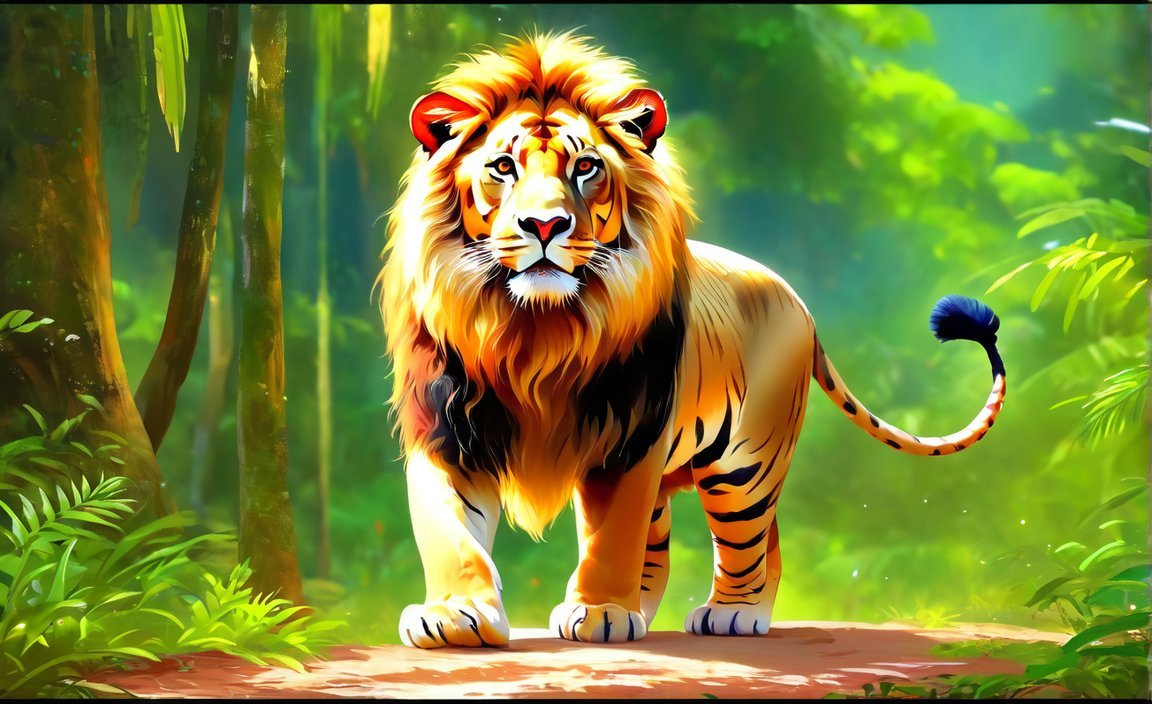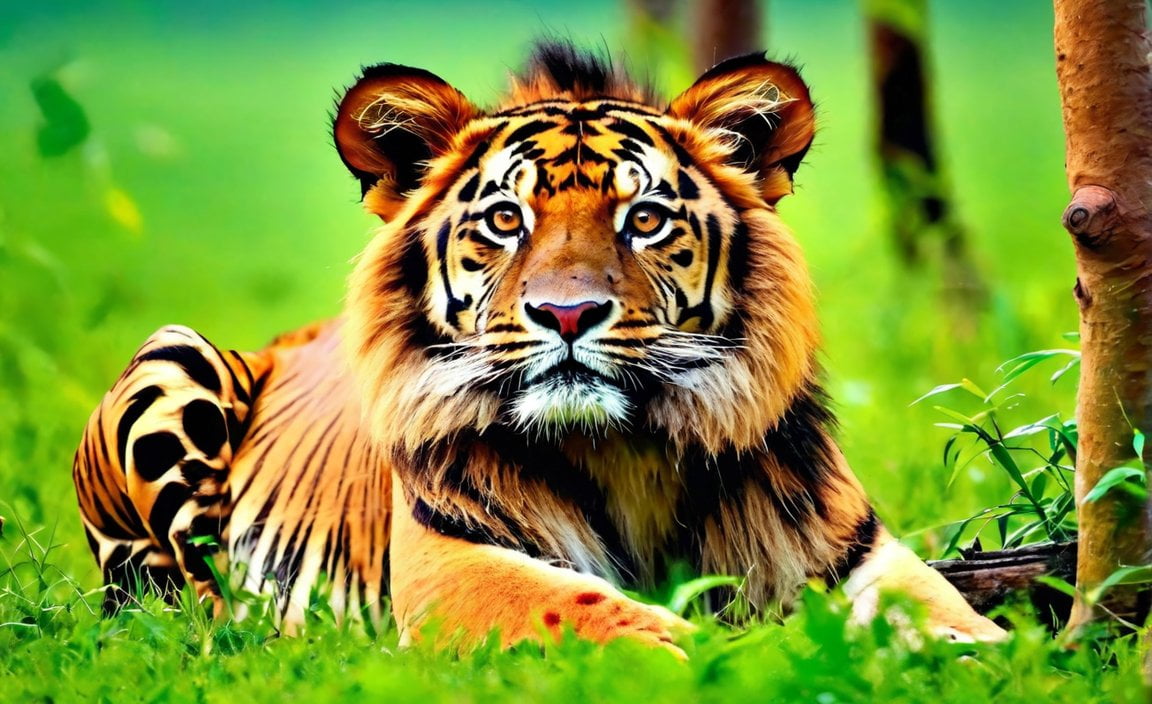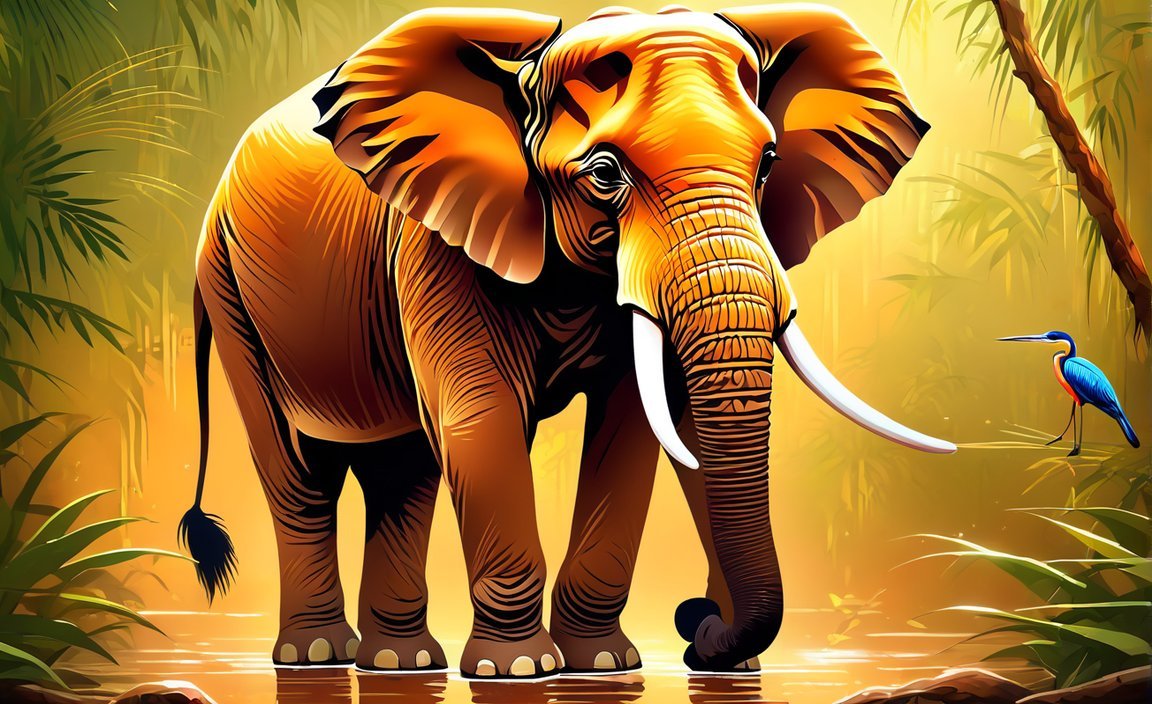Discovering India’s 10 Rare Animals: A Glimpse into Biodiversity takes you on an extraordinary journey through the captivating and diverse wildlife of India. Prepare to be immersed in the enchanting world of these elusive creatures as we bring to light their magnificent beauty and the importance of protecting their delicate ecosystems. From the majestic Bengal tiger and the elusive snow leopard to the endangered Indian rhinoceros and the colorful Malabar civet, this article showcases the incredible biodiversity of India and the urgent need for conservation efforts. Join us in exploring the wonders of these 10 rare animals and discover the measures required to ensure their survival for generations to come.
Key Takeaways:
- India is home to a diverse range of rare and exotic wildlife species that contribute to the country’s rich biodiversity.
- The Greater One-Horned Rhinoceros, Nilgiri Tahr, Bengal Tigers, Asiatic Lion, Black Buck, Lion-Tailed Macaque, Snow Leopard, Indian Wild Ass, Red Panda, and Sloth Bear are some of the notable rare animals found in India.
- These species inhabit specific habitats such as grasslands, swamps, mountains, forests, and deserts.
- The preservation and protection of these rare animals are crucial for maintaining biodiversity and ensuring their survival for future generations.
- Conservation efforts are vital to address the challenges faced by these species and create a sustainable environment for their habitats.
- India’s diverse flora and fauna make it an attractive destination for wildlife enthusiasts and conservationists.
10 Rare Animals in India

India is a treasure trove of biodiversity, home to a diverse range of rare and exotic wildlife species. In this article, we will explore ten of these remarkable creatures, their habitats, conservation challenges, and the urgent steps needed to protect them.
1. Greater One-Horned Rhinoceros
Let’s start with the magnificent Greater One-Horned Rhinoceros, also known as the Indian Rhinoceros. This critically endangered species is characterized by its single horn and armored skin. These majestic creatures can be found in the grasslands and swamps of northeastern India.
2. Nilgiri Tahr
Moving to the Western Ghats of India, we encounter the endangered Nilgiri Tahr. These sure-footed mountain goats are known for their shaggy coat and curved horns. They inhabit the high altitude grasslands and rocky slopes of the Nilgiri Hills.
3. Bengal Tigers
No discussion about rare animals in India would be complete without mentioning the national animal, the Bengal Tigers. These majestic big cats are known for their distinctive orange coat with black stripes. They can be found in various ecosystems, including mangroves, forests, and wetlands.
4. Asiatic Lion
Next on our list is the Asiatic Lion, a rare species found in the Gir Forest National Park in Gujarat, India. This majestic creature, slightly smaller than its African counterparts, symbolizes conservation success. However, it still faces significant challenges due to its small population.
5. Black Buck
The elegant Black Buck is a predominantly Indian antelope species. Males are known for their distinctive twisted horns and black and white coat. They prefer open grasslands and plains as their habitat.
6. Lion-Tailed Macaque
Moving back to the Western Ghats, we find the endangered Lion-Tailed Macaque. This unique primate species is characterized by its silver mane and a black tuft at the end of its tail. It is considered one of the rarest and most threatened primate species in the world.
7. Snow Leopard
The elusive Snow Leopard, with its thick fur and impressive climbing skills, can be found in the Himalayan region of India. Spotting this endangered species in the wild is a rare and thrilling experience.
8. Indian Wild Ass
In the desert-like conditions of the Little Rann of Kutch in Gujarat, we find the Indian Wild Ass, also known as the Khur. These highly adapted creatures are swift runners and have developed unique survival strategies.
9. Red Panda
Moving to the eastern Himalayas, we encounter the adorable Red Panda. Known for their vibrant reddish-brown fur and bushy tails, these small arboreal mammals primarily inhabit high-altitude forests.
10. Sloth Bear
Finally, let’s meet the Sloth Bear, a unique species found in the forests of India. These bears have long claws, a shaggy coat, and impressive climbing abilities. They primarily feed on insects and have a fascinating range of vocalizations.
India’s unique fauna contributes to its rich biodiversity, making it a hotspot for wildlife enthusiasts and conservationists. However, these rare animals face numerous challenges, including habitat loss, poaching, and human-wildlife conflicts. It is crucial for us to raise awareness and take urgent steps to protect and preserve these species. By doing so, we can ensure a future where these enchanting creatures continue to thrive for generations to come.
Remember, our actions today determine the future of these 10 rare animals in India. Let’s join hands and work towards their conservation.
Here are three informative articles on the importance of water that you don’t want to miss!
-
10 points on importance of water – Discover the crucial role water plays in our daily lives and the ten reasons why it is so important. Click here to dive into the fascinating facts!
-
10 points on importance of water conservation – Learn why conserving water is essential for our environment and find out how you can contribute to this crucial cause. Don’t miss out on these ten enlightening points by clicking here!
-
10 points on importance of water for class 5 – Calling all students of Class 5! Explore the significance of water and its impact on our lives through these ten educational points. Click here to expand your knowledge on water’s importance!
Remember, the world of water is vast and intriguing, so click on the links to dive deeper into each topic. Happy exploring!
Detailed Description of Three Rare Animals: Their Characteristics, Habitats, and Conservation Challenges
Saola
The Saola, also known as the Asian unicorn, is a large forest-dwelling bovine found only in the Annamite Range of Laos and Vietnam. With its striking appearance and elusiveness, the Saola has captured the fascination of wildlife enthusiasts worldwide. Here are some key details about this rare animal:
-
Characteristics: The Saola has two long, parallel horns that can reach up to 20 inches in length. Its coat is dark brown with scattered white markings, blending perfectly with the dense forest foliage. It has large, dark eyes and long, slender legs, enabling it to maneuver through the forest with ease.
-
Habitat: Saolas inhabit the moist evergreen forests of the Annamite Range. Due to their elusive nature, Saolas are rarely spotted and prefer to stay hidden among the dense vegetation. They are experts at camouflage, making it difficult for predators and humans to detect their presence.
-
Conservation Challenges: Saolas face numerous conservation challenges. Firstly, their low population density and limited distribution make them vulnerable to habitat loss and fragmentation. Poaching is also a major threat, as their beautiful horns are highly prized in illegal wildlife trade. Additionally, the lack of data on Saola populations further complicates conservation efforts.
Cuban Greater Funnel-Eared Bat
The Cuban Greater Funnel-Eared Bat is an incredibly rare bat species found exclusively in a single cave in Cuba. Despite its small size, this bat plays a crucial role in maintaining the delicate balance of its ecosystem. Here’s what you need to know about this unique creature:
-
Characteristics: The Cuban Greater Funnel-Eared Bat has distinct funnel-shaped ears, which give it its name. It has short, velvety fur that ranges in color from reddish-brown to dark brown. It has an elongated snout and small eyes, equipped with exceptional echolocation abilities to navigate its surroundings.
-
Habitat: As mentioned earlier, this bat species can only be found in a single cave in Cuba. The cave provides a stable and suitable roosting habitat for the entire population of 750 individuals. The bats cluster together along the cave walls, forming large colonies.
-
Conservation Challenges: The Cuban Greater Funnel-Eared Bat faces significant conservation challenges due to its limited distribution. Any disturbance or damage to its cave habitat could lead to catastrophic population decline. The vulnerability of this species is further amplified by its low population size and inaccessibility to genetic diversity.
Ili Pika
The Ili Pika, also known as the “magic rabbit,” is a small, mountain-dwelling mammal found in Northern China. With its peculiar appearance and endangered status, the Ili Pika has become a symbol of the fragility of biodiversity. Here’s a closer look at this captivating creature:
-
Characteristics: The Ili Pika resembles a cross between a rabbit and a small mountain goat. It has a round body with short legs, and its fur is a mix of gray and brown, allowing for perfect camouflage in its rocky habitat. Its most striking feature is its expression, often resembling a perpetual frown.
-
Habitat: Ili Pikas inhabit the mountainous regions of Tianshan in Northwest China. They are specifically adapted to rocky slopes and alpine meadows, where they find shelter and enough vegetation to sustain themselves. Their habitat is characterized by extreme temperatures and harsh weather conditions.
-
Conservation Challenges: The Ili Pika faces severe conservation challenges due to habitat loss caused by climate change and human activities. Increased temperatures are affecting their alpine habitat, pushing them further up the mountains in search of cooler environments. Furthermore, their restricted distribution and isolated populations make them highly vulnerable to extinction.
Key Takeaways:

-
The Saola is a large forest-dwelling bovine found in Laos and Vietnam. It possesses two parallel horns, stays hidden in dense forests, and is threatened by habitat loss and poaching.
-
The Cuban Greater Funnel-Eared Bat is a rare bat species found only in a single cave in Cuba. Its funnel-shaped ears and echolocation abilities help it navigate its surroundings. The species is highly threatened by any disturbance to its cave habitat.
-
The Ili Pika is a small mammal found in Northern China, known for its round body and perpetual frown. It inhabits rocky slopes and alpine meadows and faces conservation challenges due to habitat loss caused by climate change and human activities.
Sources:
– Saola – Safaris Africana
– Endangered Species – National Geographic Society
Detailed Description of Three Rare Animals in India: Their Characteristics, Habitats, and Conservation Challenges
India is a land of incredible biodiversity, home to numerous rare and unique animal species. In this section, we will delve into the detailed description of the next three rare animals, exploring their characteristics, habitats, and the conservation challenges they face. Let’s discover these fascinating creatures and understand the importance of protecting them.
1. Snow Leopard (Panthera uncia):
- Characteristics:
- Snow leopards are known for their beautiful white fur, which helps them blend into their snowy mountain habitats.
- They have long, thick tails that provide balance and serve as a warm wrap during freezing temperatures.
- These elusive cats have well-developed chest muscles and strong hind legs, allowing them to leap across steep terrain.
-
Snow leopards possess remarkable eyesight, adapted for hunting in low-light conditions.
-
Habitat:
- Snow leopards are found in the rugged mountains of Central and South Asia, including the Himalayas.
- They inhabit rocky cliffs and alpine meadows at elevations ranging from 3,000 to 5,500 meters (9,800 to 18,000 feet).
-
These solitary animals have a large home range, often spanning over several hundred square kilometers.
-
Conservation Challenges:
- The main conservation challenge for snow leopards is the loss of their natural habitat due to human activities such as mining and infrastructure development.
- Illegal hunting and poaching for their fur and body parts also pose a significant threat to their survival.
- Climate change is affecting the delicate Himalayan ecosystem, causing shifts in vegetation patterns and reducing the availability of prey for snow leopards.
2. Gharial (Gavialis gangeticus):
- Characteristics:
- Gharials are large, fish-eating crocodilians with long, slender snouts lined with sharp teeth.
- Males have a distinctive growth on the tip of their snouts called a “ghara,” which becomes more prominent as they age.
- These unique reptiles can grow up to 5 to 6 meters (16 to 20 feet) in length.
-
Gharials have webbed feet and a powerful tail that aids in swimming.
-
Habitat:
- Gharials are primarily found in the rivers of the Indian subcontinent, with the largest populations in the rivers of Nepal and northern India.
-
They prefer deep, fast-flowing rivers with sandy banks, where they can bask in the sun and breed in sandy nests.
-
Conservation Challenges:
- Gharials face significant conservation challenges, primarily due to habitat degradation and loss caused by river pollution, sand mining, and dam construction.
- Illegal fishing practices, including the use of gillnets, pose a severe threat to their survival.
- The limited genetic diversity of gharials also puts them at risk of genetic disorders and reduces their ability to adapt to changing environments.
3. Lion-Tailed Macaque (Macaca silenus):
- Characteristics:
- Lion-tailed macaques have a distinctive appearance with a silver-colored mane surrounding their faces, resembling a lion’s mane.
- They have a black tuft at the end of their tails, which gives them their name.
- These highly social primates have a complex social structure, living in groups led by a dominant male.
-
Lion-tailed macaques are known for their remarkable agility and can leap through trees with ease.
-
Habitat:
- Lion-tailed macaques are endemic to the Western Ghats of India, specifically in the tropical rainforests of Karnataka, Kerala, and Tamil Nadu.
-
They are typically found in the upper canopy of the forests, where they feed on leaves, fruits, and seeds.
-
Conservation Challenges:
- The primary conservation challenge for lion-tailed macaques is habitat destruction due to deforestation and fragmentation of their forest habitats.
- Human activities such as agriculture, logging, and infrastructure development encroach upon their natural habitat.
- The small population size and limited genetic diversity of lion-tailed macaques make them susceptible to disease outbreaks and other threats.
These three rare animals represent just a glimpse of the incredible biodiversity found in India. By understanding their characteristics, habitats, and the conservation challenges they face, we can appreciate the importance of protecting these magnificent creatures and their delicate ecosystems.
Key Takeaways:
- Snow leopards are elusive cats with white fur, found in the rugged mountains of Central and South Asia. Conservation challenges include habitat loss, poaching, and climate change.
- Gharials are fish-eating crocodilians with distinct snouts, primarily found in the rivers of Nepal and northern India. Conservation challenges include river pollution, sand mining, and illegal fishing practices.
- Lion-tailed macaques are social primates with a unique appearance, endemic to the Western Ghats of India. Conservation challenges include habitat destruction and fragmentation.
Sources:
1. QillX. “Exploring the World’s 10 Rarest Animals.” QillX. qillx.com
2. HowStuffWorks. “Rarest Animals in the World: 10 Critically Endangered Species.” animals.howstuffworks.com
Detailed Description of the Final Four Rare Animals: Their Characteristics, Habitats, and Conservation Challenges
Saola
- The Saola, also known as the Asian unicorn, is one of the rarest mammals alive today.
- It is native to Vietnam and is found only in the Annamite Range.
- The Saola has a unique appearance, resembling an antelope with long, slender horns and a dark brown coat.
- Its elusive nature makes it difficult to determine the exact population size, but it is estimated to be critically endangered.
- Conservation challenges for the Saola include habitat loss due to deforestation, illegal hunting, and the lack of effective conservation measures in its limited habitat.
- Urgent steps are needed to protect the Saola’s habitat and strengthen conservation efforts to ensure its survival.
Javan Rhino
- The Javan Rhino is one of the rarest animals in the world and is found in Ujung Kulon National Park in Indonesia.
- It is characterized by its single horn and gray, leathery skin.
- The Javan Rhino is critically endangered, with a population estimated to be less than 70 individuals.
- Its conservation challenges include poaching for its horn and habitat loss due to deforestation.
- Conservation efforts focus on anti-poaching measures, habitat protection, and captive breeding programs to increase the population.
Sumatran Elephant
- The Sumatran Elephant is a critically endangered species found on the island of Sumatra, Indonesia.
- It is smaller than other elephant species and has more depigmentation on its skin.
- Loss of habitat due to deforestation, conversion of land for agriculture, and conflicts with humans are major conservation challenges for the Sumatran Elephant.
- The population is estimated to be less than 3,000 individuals, making conservation efforts crucial for its survival.
- Steps needed to protect the Sumatran Elephant include habitat preservation, limiting human-elephant conflicts, and raising awareness about the importance of conservation.
Sunda Island Tiger (Sumatran Tiger)
- The Sunda Island Tiger, also known as the Sumatran Tiger, is the smallest tiger subspecies and is found only on the island of Sumatra.
- It has distinctive dark orange fur with black stripes and a mane on its head.
- The Sunda Island Tiger is critically endangered, with a population of less than 400 individuals.
- Habitat loss due to deforestation, poaching for their body parts, and conflicts with humans are major conservation challenges.
- Urgent steps are needed to protect their habitat, enforce anti-poaching measures, and raise awareness about the importance of tiger conservation.
Key Takeaways:
- The Saola, Javan Rhino, Sumatran Elephant, and Sunda Island Tiger are all critically endangered species.
- Conservation challenges for these rare animals include habitat loss, poaching, and conflicts with humans.
- Urgent steps needed to protect their habitats, enforce anti-poaching measures, and raise awareness about the importance of conservation.
- Population estimates for these species are alarming, emphasizing the need for immediate action.
- Protecting and conserving these rare animals is crucial to preserving biodiversity and ensuring their survival for future generations.
Sources:
– Animal Vivid. “Rare Animals: 15 Rarest Animals In The World (With Pictures)”. Animal Vivid
– QillX. “Exploring the World’s 10 Rarest Animals.” QillX. qillx.com
FAQ
Q1: Which rare animal species can be found in India?
A1: India is home to a diverse range of rare animal species. Some notable examples include the Greater One-Horned Rhinoceros, Nilgiri Tahr, Bengal Tigers, Asiatic Lion, Black Buck, Lion-Tailed Macaque, Snow Leopard, Indian Wild Ass, Red Panda, and Sloth Bear.
Q2: Where can I find the Greater One-Horned Rhinoceros in India?
A2: The Greater One-Horned Rhinoceros, also known as the Indian Rhinoceros, can be found in the grasslands and swamps of northeastern India.
Q3: What is the status of the Bengal Tigers in India?
A3: Bengal Tigers, the national animal of India, can be found in various parts of the country. However, they are considered an endangered species due to various conservation challenges.
Q4: Are Lion-Tailed Macaques found exclusively in India?
A4: Yes, Lion-Tailed Macaques are primarily found in the Western Ghats of India. They are considered one of the rarest and most threatened primate species in the world.
Q5: What is the habitat preference of the Snow Leopard in India?
A5: The Snow Leopard, a magnificent large cat, can be found in the Himalayan region of India. It inhabits high-altitude areas and is known for its impressive climbing skills.
















